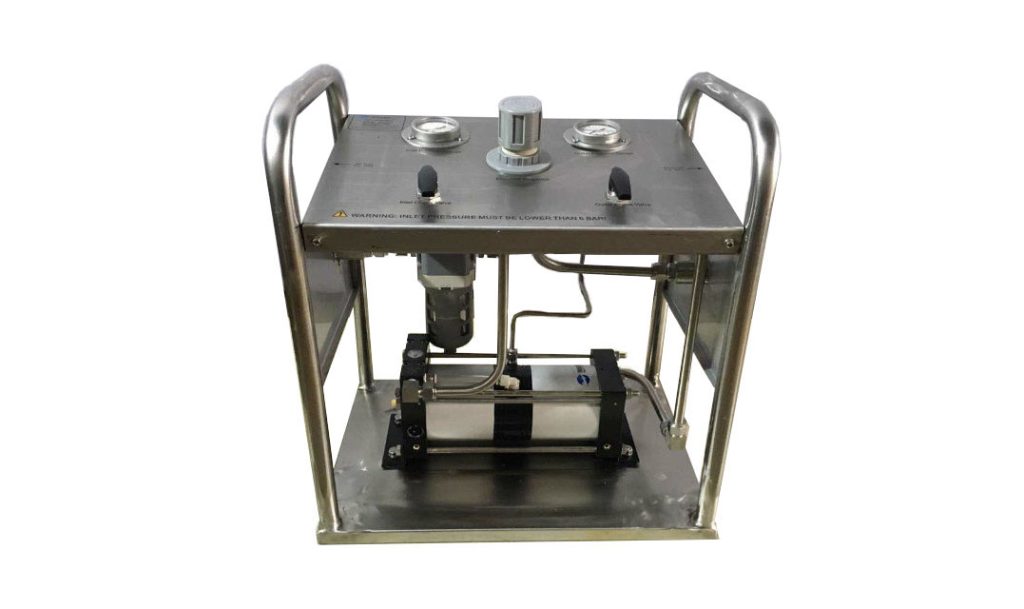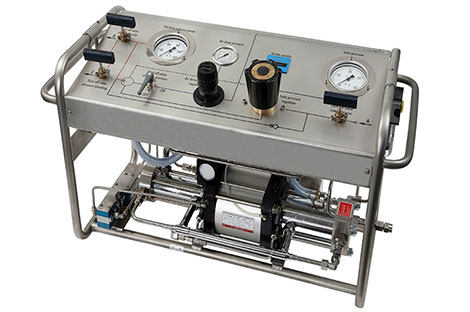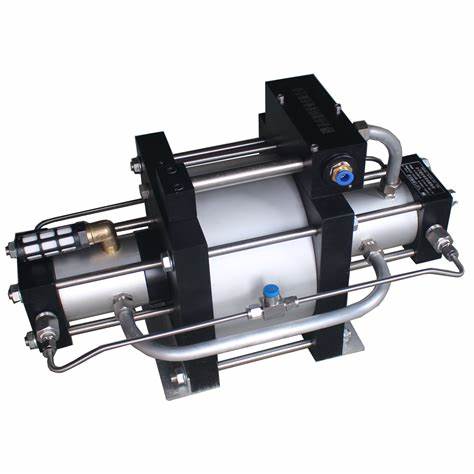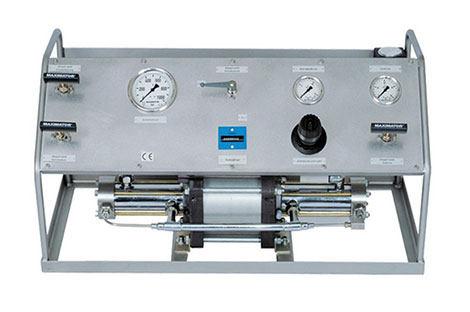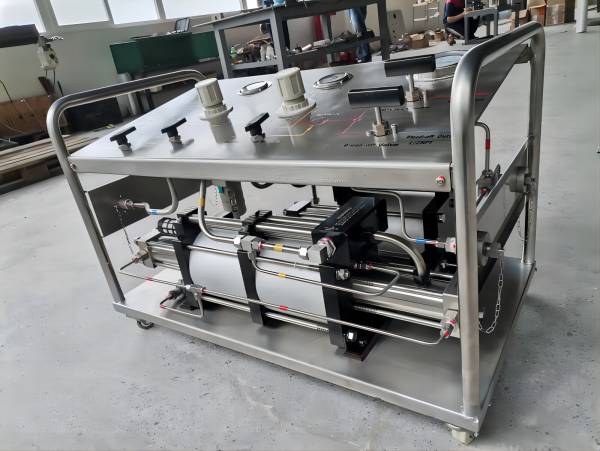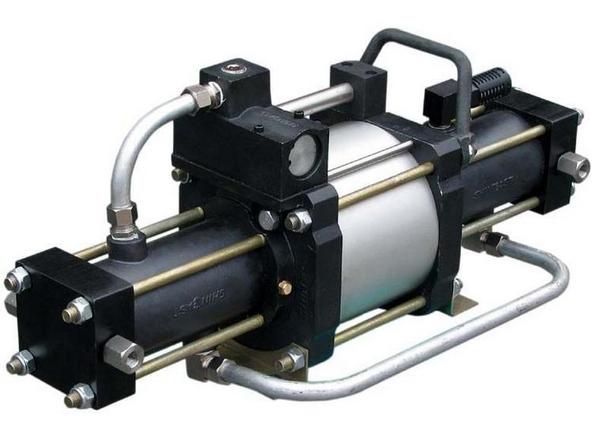Differences Between N2 Booster Pumps and N2 Booster Compressors
Nitrogen is a critical element in various industrial processes, from chemical synthesis to electronics manufacturing. The ability to increase its pressure efficiently and reliably is essential for many applications. This is where nitrogen booster equipment comes into play, including nitrogen booster pumps and nitrogen booster compressors. While these devices may sound similar, they serve distinct purposes and are suited for different applications. This article delves into the differences between nitrogen booster pumps and nitrogen booster compressors, exploring their working principles, applications, and maintenance requirements.

Key Differences
1. Definition and Purpose
Nitrogen Booster Pump
A nitrogen booster pump, often referred to as an N2 booster pump, is primarily a pneumatic device designed to increase the pressure of nitrogen gas. It operates by utilizing the principles of pneumatic boosting technology. In essence, the pump uses a low-pressure gas to drive a high-pressure output through a piston mechanism. This type of pump is commonly used in various industrial applications, such as:
- Machine Tool Clamping: Nitrogen booster pumps are employed to exert high clamping forces on machine tools, ensuring precise operations.
- Accumulator Pressurization: These are used to pressurize accumulators, which store energy for hydraulic systems.
- High-Pressure Bottle Filling: These pumps are also utilized to fill high-pressure gas bottles, which are essential for various industrial and laboratory uses.
Nitrogen Booster Compressor
In contrast, a nitrogen booster compressor is a more complex device designed to compress low-pressure nitrogen gas into high-pressure gas. This device is often employed in industries requiring high-purity and high-pressure nitrogen for processes such as:
- Chemical Processing: Nitrogen booster compressors are used to fill high-pressure reaction vessels, which are crucial for controlling reaction conditions and improving product yield and quality.
- Electronics Manufacturing: In the electronics industry, these compressors provide high-pressure nitrogen for various manufacturing processes.
- Food Processing: They are used to create an inert atmosphere during food packaging, which helps in preserving the food and extending its shelf life.
2. Working Principles
Nitrogen Booster Pump
The working principle of a nitrogen booster pump involves pneumatic boosting technology, which can be summarized in the following steps:
- Intake of Low-Pressure Nitrogen: The N2 booster pump draws in nitrogen gas at a lower pressure through an intake port.
- Compression of Nitrogen: The intake of nitrogen gas enters a compression chamber where it is compressed by the movement of pistons. This process increases the pressure of the gas.
- Output of High-Pressure Nitrogen: The compressed nitrogen gas is then expelled through an exhaust port, ready for use or further processing.
The design of a nitrogen booster pump allows it to work within various pressure ranges and maintain stable output pressure, making it suitable for multiple industrial applications.
Nitrogen Booster Compressor
The working principle of a nitrogen booster compressor involves a more complex mechanism:
- Multiple Compression Stages: Nitrogen booster compressors typically feature several stages of compression to progressively increase the pressure of the nitrogen gas.
- Additional Components: These compressors often include filters and dryers to ensure that the nitrogen gas remains pure and dry, which is essential for high-precision applications.
- High-Purity Output: The end result is high-pressure nitrogen gas that meets stringent purity and pressure requirements.
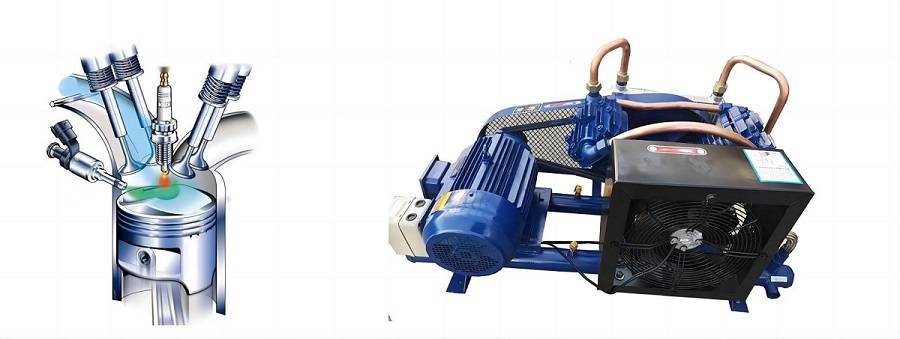
3. Design and Operation
Nitrogen Booster Pump
The design of a nitrogen booster pump focuses on simplicity and efficiency:
- High Output Pressure: These pumps are designed to deliver high output pressure, often reaching several hundred or even thousands of bars.
- Wide Usage Range: Their versatility makes them suitable for various industrial applications, including those requiring rapid high-pressure output.
- Automatic Pressure Maintenance: Nitrogen booster pumps can automatically maintain output pressure, enhancing their ease of use and reliability.
- Ease of Operation and Maintenance: These pumps are typically easy to operate and maintain, with straightforward controls and minimal upkeep requirements.
Nitrogen Booster Compressor
On the other hand, the design of a nitrogen booster compressor is more intricate:
- Complex Design: These compressors involve multiple compression stages and additional components like filters and dryers.
- Focus on Purity: Ensuring the purity and dryness of the nitrogen gas is a critical aspect of their design, especially for applications requiring high-quality gas.
- Stable High-Pressure Output: Nitrogen booster compressors are designed to provide a stable high-pressure output, crucial for industries with stringent requirements.
4. Applications
Nitrogen Booster Pump
The nitrogen booster pump finds application in various industrial settings, including:
- Machine Tool Clamping: Providing the necessary clamping force for precise machining operations.
- Accumulator Pressurization: Pressurizing accumulators to store energy for hydraulic systems.
- High-Pressure Bottle Filling: Filling bottles with high-pressure nitrogen for use in various industrial and laboratory applications.
Nitrogen Booster Compressor
The nitrogen booster compressor is essential in several industries:
- Chemical Processing: Filling high-pressure reaction vessels and improving reaction control.
- Electronics Manufacturing: Providing high-pressure nitrogen for manufacturing processes.
- Food Processing: Creating an inert atmosphere for food packaging to extend shelf life.
- Leak Testing: Conducting gas-tightness tests on valves, pipes, and other components to ensure safety.
- Chemical Transport: Assisting in the transport of chemicals by providing nitrogen as an inert medium.
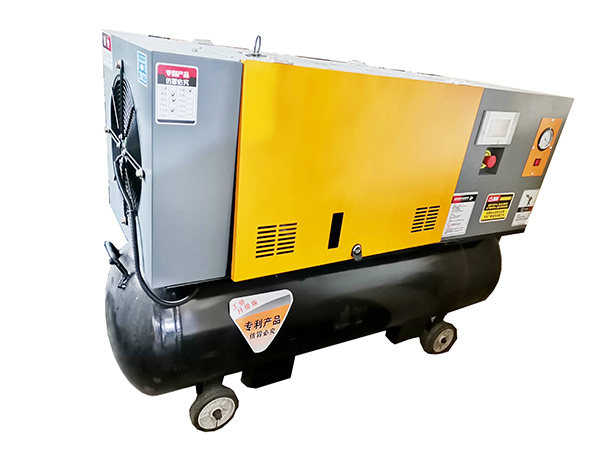
Differences in Maintenance Considerations
Maintenance of Nitrogen Booster Pumps
Maintaining a nitrogen booster pump involves several key aspects:
- Drive Air Pressure Adjustment: It is crucial to adjust the drive air pressure to the appropriate level, typically between 3 and 8 bar, to ensure optimal performance and extend the lifespan of seals.
- Cleaning and Protection: Installing filters at the intake end of the pump helps to keep the compressed gas clean. Safety devices such as rupture discs may also be necessary.
- System Depressurization: Before performing maintenance, it is essential to ensure that the system is depressurized, with both the drive and intake pressures turned off, and any high-pressure output pressure released.
Maintenance of Nitrogen Booster Compressors
The maintenance of nitrogen booster compressors requires attention to additional factors:
- Operation Temperature: Keeping the compressor within the manufacturer-specified temperature range is crucial to avoid material degradation or damage.
- Quality of Drive Gas: Using high-quality drive gases and appropriate seal materials, especially in low-temperature conditions, helps prolong the lifespan of seals and components.
- System Filtration: Ensuring that the gas entering the compressor is clean and properly filtered prevents blockages and damage.
- Regular Inspections: Conducting regular inspections and checks on pressure levels and connection tightness helps to prevent potential issues and maintain safety.
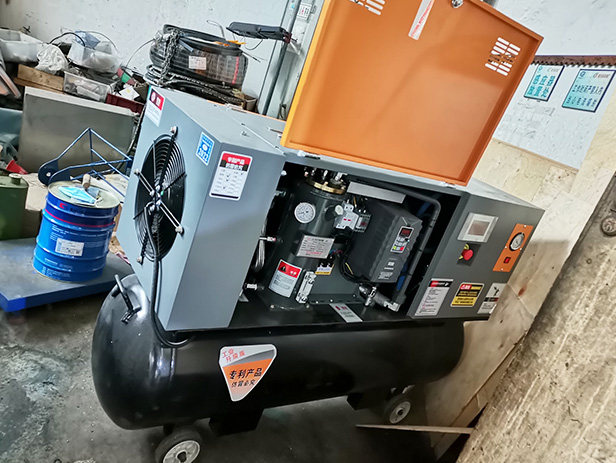
Conclusion
Understanding the differences between nitrogen booster pumps and nitrogen booster compressors is essential for selecting the right equipment for specific applications. While both devices are designed to increase nitrogen pressure, they serve distinct purposes and have different operational mechanisms. The nitrogen booster pump (N2 booster pump) is ideal for applications requiring high-pressure output and ease of maintenance, whereas the nitrogen booster compressor is better suited for applications needing high-purity gas and stable pressure over multiple stages of compression. So, it is important to choose the appropriate equipment based on application needs and maintenance requirements.

